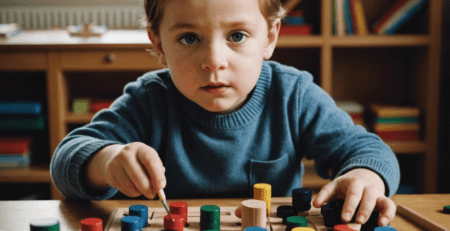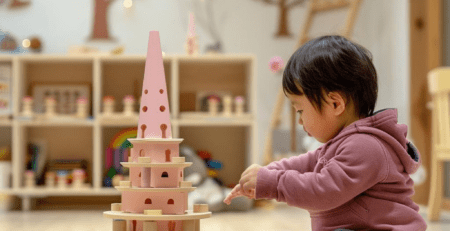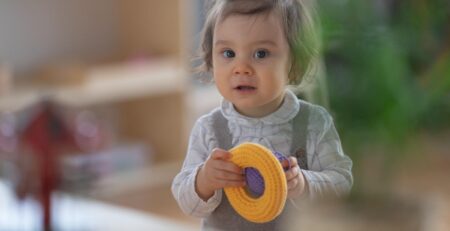
29
Discover the Unique Approach of Montessori Education
In today’s education landscape, the Montessori approach to learning has gained widespread recognition for its unique philosophy and methods. With a focus on child-led, experiential education, Montessori schools provide a markedly different experience from traditional educational settings. In this article, we will explore the key characteristics that set Montessori education apart and delve into the reasons why this approach has garnered such a dedicated following among parents, educators, and scholars alike. Join us as we unravel the mysteries of Montessori and discover how it reshapes the way we think about learning.
Table of Contents
- How is Montessori Education Different
- Emphasis on Self-Directed Learning
- Mixed Age Classrooms
- Use of Montessori Materials
- Focus on Practical Life Skills
- Q&A
- Concluding Remarks
How is Montessori Education Different
Another distinctive feature of Montessori education is the use of specialized learning materials that are designed to promote hands-on, experiential learning. These materials are carefully curated to provide students with a deeper understanding of concepts through tactile experiences. Additionally, the multi-age classrooms in Montessori schools encourage peer learning and collaboration, promoting a sense of community and empathy among students.
- Child-centered approach: Montessori education focuses on the individual needs and interests of each child, allowing them to explore their unique talents and abilities.
- Integrated curriculum: The Montessori curriculum integrates subjects and topics, providing a holistic view of learning for students.
- Emphasis on practical life skills: In addition to academic knowledge, Montessori education emphasizes the development of practical life skills such as independence, responsibility, and self-discipline.
| Traditional Education | Montessori Education |
|---|---|
| Follows a standardized curriculum | Encourages individualized learning |
| Teacher-directed instruction | Student-led exploration |
| Single-age classrooms | Multi-age classrooms |
Emphasis on Self-Directed Learning
One of the key differentiators of Montessori education is the emphasis on self-directed learning. In a traditional classroom setting, the teacher takes on the role of the primary source of knowledge and instruction. However, in a Montessori environment, children are encouraged to take the lead in their own learning journey. This approach empowers students to explore their interests, set their own pace, and take ownership of their education. By allowing students to follow their natural curiosity, Montessori education fosters a love for learning that extends beyond the classroom.
Montessori classrooms are carefully designed to support self-directed learning. They are equipped with a variety of hands-on learning materials that are specifically tailored to the developmental needs of the students. These materials are designed to be self-correcting, allowing children to learn through trial and error. As a result, students are able to develop problem-solving skills, independence, and self-confidence. The freedom to choose their own work and work at their own pace promotes a sense of autonomy and responsibility for their learning.
Mixed Age Classrooms
One of the unique aspects of Montessori education is the use of mixed age classrooms. Unlike traditional classrooms where students are grouped based on their age, Montessori classrooms typically consist of children spanning a three-year age range. For example, a classroom may have children ages 3-6, 6-9, or 9-12 all learning together. This approach allows for a more natural and authentic learning environment, where children learn from and with each other, regardless of age.
The mixed age classroom promotes:
- Peer learning opportunities
- Collaboration and cooperation
- Development of leadership and mentoring skills
- Strengthened sense of community and belonging
Furthermore, align with the Montessori philosophy of recognizing and respecting each child’s individual pace of development. Rather than being limited to a specific grade level, students have the freedom to progress at their own pace, supported by a diverse group of peers and teachers.
Use of Montessori Materials
Montessori education emphasizes the use of specially designed materials to facilitate learning and development in children. These materials are a core component of the Montessori method, which sets it apart from traditional education. The promotes hands-on, experiential learning, allowing children to explore and understand concepts through touch and manipulation.
Montessori materials are carefully curated to appeal to a child’s natural curiosity and desire to learn. Each material is designed to isolate a specific concept, making it easier for children to comprehend and internalize. The also encourages independence and self-directed learning, as children are given the freedom to choose and work with the materials at their own pace.
Key benefits of Montessori materials include:
- Promotes hands-on learning
- Enhances understanding of abstract concepts
- Fosters independence and self-discipline
- Encourages exploration and discovery
Overall, the sets Montessori education apart by providing a unique and effective approach to learning that aligns with a child’s natural development and curiosity.
Focus on Practical Life Skills
Montessori education emphasizes the development of practical life skills, setting it apart from traditional educational methods. In a Montessori classroom, children are given the opportunity to engage in activities that foster independence, self-confidence, and a sense of responsibility. These practical life skills include everyday tasks such as pouring, spooning, and buttoning, as well as activities related to care of self and care of the environment. This unique approach not only prepares children for their future academic endeavors but also instills in them a sense of purpose and capability.
One of the key differences in Montessori education is the focus on real-world application. Rather than emphasizing rote memorization and passive learning, Montessori classrooms offer hands-on experiences that allow children to develop practical and transferable skills. By engaging in activities that mimic real-life tasks, children develop a sense of mastery and competence, which lays a strong foundation for their future success. This approach to education not only promotes cognitive development but also nurtures emotional and social growth, setting children up for a well-rounded and fulfilling life.
Q&A
Q1: What sets Montessori education apart from traditional schooling methods?
A1: Montessori education focuses on fostering independence, self-directed learning, and individualized instruction, whereas traditional schooling typically follows a structured curriculum with teacher-led instruction.
Q2: How does the Montessori approach support a child’s development?
A2: The Montessori approach emphasizes hands-on learning, exploration, and the use of specially designed educational materials to promote cognitive, social, and emotional development.
Q3: What role does the teacher play in a Montessori classroom?
A3: In a Montessori classroom, the teacher acts as a guide and facilitator, allowing the students to take an active role in their learning and providing support as needed.
Q4: How does the Montessori method accommodate different learning styles and abilities?
A4: The Montessori method allows for individualized learning experiences, enabling students to progress at their own pace and focus on areas where they need additional support or challenge.
Q5: How does the Montessori environment differ from a traditional classroom setting?
A5: Montessori classrooms are designed to promote independence and self-motivated learning, with an emphasis on freedom of movement and exploration, as well as mixed-age groupings to encourage peer learning and collaboration.
Q6: What are some key principles of the Montessori philosophy?
A6: Some key principles of the Montessori philosophy include respect for the child, the importance of the prepared environment, and the belief in the innate potential for each child to learn and grow.
Q7: How does the Montessori approach prepare students for the future?
A7: By fostering independence, critical thinking, and a love of learning, the Montessori approach equips students with the skills and mindset they need to succeed in a rapidly changing world.
Concluding Remarks
In conclusion, the Montessori education method offers a unique and innovative approach to learning that sets it apart from traditional education systems. By prioritizing individualized learning, self-directed exploration, and the integration of real-world experiences, Montessori classrooms provide an environment that nurtures independence, creativity, and a lifelong love of learning. This holistic and student-centered approach not only fosters academic success but also promotes the development of essential life skills. As we continue to evolve in the field of education, it is important to recognize and embrace the diversity of teaching methodologies, and the Montessori method is certainly a valuable addition to the landscape of educational options available to students and families today.










